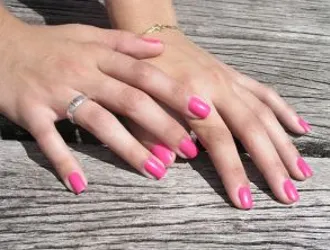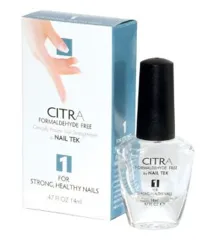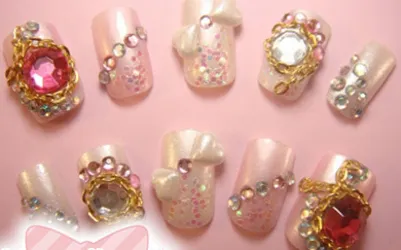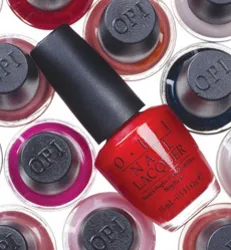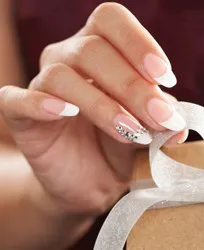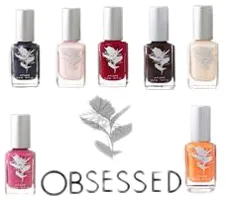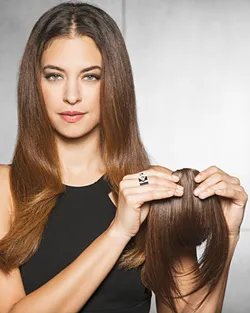
Nail Tips - Fungal Infections - What's Eating At Your Nails?
IntroductionWhen I started cosmetology school I was not only excited about taking all the different hair classes (cut, chemicals, styling, etc.,) but also the skin and nail classes. A cosmetology license in most states means the cosmetologist is trained to do hair, give facials and skin care treatments and do nails. I will admit my passion for hair used to far exceed my love of nails. Going to school has changed all that. Learning about nails from the other side of the table has been an exciting journey. It has also taught my how important it is for nail professionals to become informed in the prevention, identification and care of fungal infections. Some nail consumers do not realize that nail professionals or nail techs are at a higher risk of catching fungal infections then other beauty professionals. Fungal infections which attack nails is technically known as onychomycosis (pronounced oni-koh-meye-KOH-sis). Highly infectious, onychomycosis (OM) is caused by a vegetable parasite. One sign of nail fungus infections are white patches that appear on the nails and can be easily scraped off. Nails which become infected with a fungus also may become extremely brittle, turn yellow and cause pain. Medial studies show that fungal infections that attack fingernails offer a better prognosis then infections of the toenails which is due to a number of reasons.
What Is A Fungus?A fungus is a microorganism derived from the plant family. These infections differ from bacterial and viral functions by the fact they are slow growing and can become chronic. Although nail fungus infections are usually localized, there are cases where the fungus can spread throughout the body. One client had scratched her scalp with her fungus infected nails which resulted in the fungus spreading throughout her entire scalp area. This client was elderly and suffering from diabetes, which made her the exception to the rule for spread of fungus. Fungus diseases specific to nails fall into three major categories. These include yeasts, molds and dermatolphytes. All three types of fungi have a significant role in the development of fungal infections that attack nails. Yeast infections may develop under the a proximal nail fold, under a nail plate that has separated from the nail bed and between a nail plate and artificial nails or nail byproducts. Dermatophytes break down keratin which is the protein that makes up hair and nails. Dermatophytes thrive by absorbing the keratin. Trichopyton rubrum (known as T rubrum) is a dermatophyte responsible for the majority of onychomycosis cases. While it is suggested that T rubrum accounts for 80% of all cases of OM, Trichophyton mentagrophytes may account for 20% of the cases. Molds and yeasts account for the rest of all OM cases. Candida albicans is yeast that can also cause chronic candidiais of the nails. How Do You Catch A Nail Fungus?One of the most common places to catch a fungal infection is at the health club. Not only are feet at risk for athletes foot, toenails have a higher risk of becoming infected as well. Just as some people never catch colds or the flu, there is a segment of the population that is naturally immune from fungus infections which attach the nails. In general, foot doctors and nail experts suggest that toenails are more at risk than fingernails because in general feet are covered by socks and shoes which offer a dark, moist environment for fungi to grow in. Once a fungus has set in, treatment may involve surgical, topical or oral methods. In some severe cases treatment might include a combination of the three methods. Since there is a high risk of recurrence over time, treatment must be determined by a qualified physician. Another location with the potential for spreading fungal infection is at a nail salon or spa. This does not mean that all manicurists or pedicurists are risky. It also does not mean that you should avoid having manicures or pedicures. However, you should always take all necessary precautions and only frequent salons, spas and nail care locations that are highly reputable and maintain the highest of sanitary conditions. Preventing Nail Fungus In GeneralPrevention is critical with both finger and toe nail fungus infections. The best way to prevent infection is to follow these methods: 1. Keep feet covered at the heath club in all public areas and in the shower areas. 2. Wash feet and hands daily. Dry well between toes to prevent any fungus friendly moisture from lingering. 3. Wear clean cotton soaks what naturally absorb moisture. 4. Keep nails neatly trimmed. 5. Use foot and shoe powders to keep moisture at bay. 6. Be careful with cutting nails since any tears or cuts on the skin around the toenails can offer an immediate point of entry for fungus or other types of infection. 7. Never wear the same pair of shoes two days in a row. 8. Wear shoes made of breathable materials such as canvas, mesh or similar. Avoid shoes that trap moisture. Flip flops which allow the feet to breath are a good choice for warm weather. Just as some people never catch colds or the flu, there is a segment of the population that is naturally immune from fungus infections which attach the nails. Whether you are naturally immune or not, take all precautions to prevent nail infections. It's always better to be safe than sorry. In general, foot doctors and nail experts suggest that toenails are more at risk than fingernails because in general feet are covered by socks and shoes which offer a dark, moist environment for fungi to grow in. Preventing Nail Fungus At The Salon, Spa Or Nail StudioThe key to minimizing the spread of fingernail and toenail fungus at a salon or spa is making sure the nail professional and the salon follow proper sterilization methods. Proper sterilization means that all the instruments used should be submerged completely in very high level disinfectants for at least 10 hours, dry heated for over six minutes at 190 degrees or steamed under pressure for at least 3 minutes at 134 degrees. If a salon has lots of pedicure and manicure tools they will be able to take the time to follow proper sterilization. However, the smaller the shop, the less likely it is that the nail pros have enough excess equipment to allow them to spend the required time sterilizing tools. When skin is punctured by tools it is essential that proper treatment with fungicides is immediately undertaken to prevent infection. High end spas offering nail treatments will have standard treatments for dealing with any cut skin, bleeding or punctures. Smaller nail salons will often not have the same preventive treatments. What precautions can you take to minimize risk of infection when having a manicure or pedicure? 1. Purchase brand new manicure and/or pedicure tools and take to the salon. Insist that your tools be used. Some salons will honor your requests and others will not. 2. Ask for a demonstration of how all tools are sterilized. If you do not see extra tools being steamed or soaked, be suspicious. 3. When in doubt, ask the salon for a copy of their care procedures for dealing with cuts or bleeding. If they are not able to provide details, do not book an appointment. 4. Only allow a manicurist or pedicurist to work on your nails if they are using gloves. This protects you and the nail technician from transmitting a range of diseases. 5. Watch to see if the nail technician uses spatulas to remove lotions and creams from containers. They should never use their fingers or hands. 6. Check to see if all jars are kept closed when not in use. 7. Take your own nail polish to avoid sharing a polish brush other customers have had applied to their nails. 8. Ask how the tubs are cleaned. A common source of bacteria and fungus are the screens inside the manicure tubs. 9. When possible, make your appointment the first manicure or pedicure of the day. This minimizes your risk of infection from previous nail customers. 10. Take your own flip flops to wear after a pedicure or make sure only brand new disposable pedicure slippers are accepted. 11. Use common sense. If something doesn't fill right about a nail salon or spa, leave immediately. Other precautions include making sure only clean towels are used at all times and that the nail pro washes their hands before working on your nails, even when they wear gloves. Ask for cuticle softening rather than clipping which prevents punctures and bleeding. Make sure all nail files, which are very inexpensive, are brand new. Can Nail Infections Kill You?Are fungus infections that attack nails life threatening? It depends who you talk to. Most experts agree that certain segments of the population are more at risk for serious health conditions related to nail fungus infections. Nail consumers with a weak immune system suffering from serious health conditions such as diabetes, hepatitis, lupus, HIV or similar have more danger of the fungal infection entering the bloodstream and in rare cases, causing the infection to spread throughout the entire body, possibly leading to death. The elderly are also more at risk for complications from nail fungus than others. Other nail care experts do not link potential death from fungus infections for the general population. However, it is widely known that once a nail fungus takes hold, it has a high risk of return after the first attack has been subdued. SummaryA fungus is a microorganism derived from the plant family. These infections differ from bacterial and viral functions by the fact they are slow growing and can become chronic. Although nail fungus infections are usually localized, there are cases where the fungus can spread throughout the body.
|
| If you want to talk more about this or other hair care articles on HairBoutique.com or anywhere else, please post a message on HairBoutique.com's Hair Talk Forums.
|
Social Media Network Information
Please follow us on Twitter at: https://Twitter.com/HairBoutique. I look forward to meeting new people from all walks of Twitter and learning from their Tweets.


